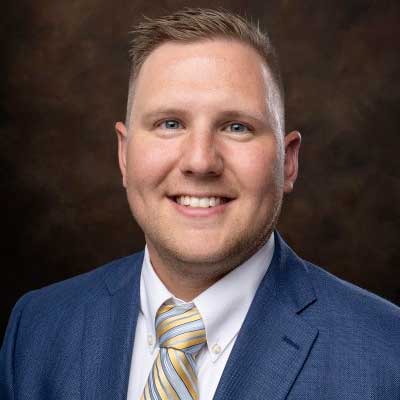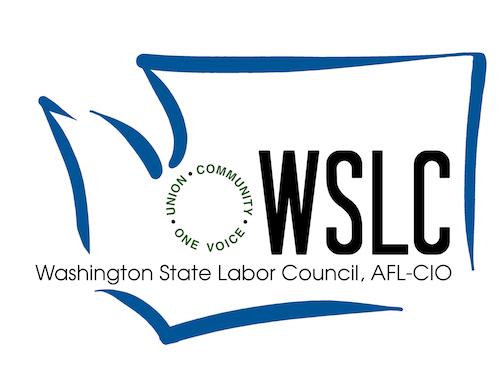Real Estate Economist Highlights Lewis County Infrastructure and Real Estate Seminar
Windermere’s Matthew Gardner Updates His Yearly Real Estate Forecast By the Economic Alliance of Lewis County
The Economic Alliance of Lewis County presents the Lewis County Infrastructure and Real Estate Seminar 1 to 3 p.m. Wednesday, Oct. 4 at The Loft in Chehalis, featuring keynote speaker Matthew Gardner, the chief economist for Windermere Real Estate.
Gardner will address housing shortages, infrastructure, short term rentals, purchase and sales and real estate trends. Cost is $25 per person. To register, call Dolly at 360-748- 0114.
Gardner’s 2023 Top 10 Predictions — Mid-Year Update
Gardner revisits his Top 10 Predictions for 2023. Reviewing his forecasts for home prices, mortgage rates, and more, he highlights recent changes in the real estate market and updates his predictions for the near future.
“At the end of last year, I published my Top-10 Predictions for 2023 and, as we hit the mid-year mark, some of you have been asking me how well my forecasts have been holding up,” Gardner said. “So, I thought it would be interesting to take another look at them to see how accurate they have or have not been.”
The following were the predictions Gardner made last November, and they covered everything from his expectations for home sales and prices to shifting government policies.
1. U.S. Home Sale Prices
My first forecast suggested that sale prices would fall in 2023; however, I was not expecting any sort of systemic decline in values. Year-over-year prices are down by a bit less than 2%, but when you look at how prices have changed month over month, they rose by 3.6% in April and are up by more than 6% since the end of last year.
I stand by my forecast that the median sale price in 2023 will be modestly lower than the 2022 number; and the monthly increase in sale prices that we have seen so far this year also supports my forecast that we are not seeing any long-term decline in home values.
2. Mortgage Rates
Although mortgage rates have broken above 7% eight times so far this year — the first time because of the banking crisis, and the second because of the looming debt ceiling — I expect them to become a little less frantic as we move through the second half of the year. That said, my call for them to drop below 6% this year is now likely to be inaccurate given where they are today. I still expect them to drop into the “fives” though, but not until early next year.
3. Listing Activity
Listing activity saw a very modest late spring bump, but for perspective, the number of homes for sale is running at about 40% of its long-term average, and I still don’t see much growth this year. Why? Well, by my calculations, there could be over 20 million homeowners with mortgage rates around 3%. Why would they move?
4. Months of Inventory
And with limited inventory, the market still “technically” favors home sellers. Now, this is a little speculative because what defines a traditional “buyer’s” or “seller’s” market varies by location, but with relatively few homes on the market and the share of homes with price reductions dropping and list prices rising again, I just can’t see a buyer’s market appearing this year.
5. U.S. Median Prices
Well, this doesn’t look to be meeting my forecasts, does it? Sellers have been pretty bullish so far this year, but I would add that this is not true across the whole country. List prices are still down significantly in markets such as Hailey, Idaho; Jasper, Alabama; and Elko, Nevada, where list prices for single-family homes are down between 30% and 50% from their peak. So, I admit that the country has outperformed my forecast for list prices.
6. Workers Returning to Work
As I had expected, the pace of workers heading back to the office has not been very robust. In fact, the share of people in the office full time dropped to 42% in the second quarter of 2023, down from 49% in the first quarter. Meanwhile, the share of offices with hybrid work arrangements hit 30% in the quarter, up from 20% the previous quarter. But I still expect to see more workers heading back to their offices, albeit very reluctantly.
7. U.S. Single-Family New Home Starts
With new home permits down 21% year-over-year, and new home starts off by 28%, I think it’s accurate to say that activity in the new construction sector has slowed. Builders continue to be hit by high financing rates as well as high material prices.
8. Sale Prices Relative to Their 2022 Highs
As we all know, not all markets are created equal, and sales are far below their 2022 highs in some of the country’s metro areas. On the opposite end of the spectrum, there are some markets where prices have already exceeded the highs seen last year.
9. Home Ownership Affordability Monitor
Affordability has not improved, mainly due to home prices that remain out of sync with incomes as well as financing costs that remain well above the level that buyers had become used to. I still believe that this will not improve in 2023.
10. Legislation to Grow Housing Supply
And finally, I told you that governments would start to move to address the significant housing shortage that the country is experiencing, and they have. In Washington state, Gov. Jay Inslee recently signed House Bill 1110 into law which allows the development of duplex up to six-unit buildings within any area zoned for single-family-only development. Additionally, jurisdictions in a significant number of states are either pursuing legislation to tackle this problem or have at least created task forces to look at the issue. It’s a good start, but more needs to be done.
Although it’s really cheating to grade one’s own work, I think that I have been pretty accurate with my forecasts. Yes, I was too pessimistic when it came to list prices and a little optimistic regarding the direction of mortgage rates. But other than those two items, the data seems to suggest that the housing market is headed in the direction that I had suggested.
•••
About Matthew Gardner – As chief economist for Windermere Real Estate, Gardner is responsible for analyzing and interpreting economic data and its impact on the real estate market on both a local and national level.
Gardner has more than 30 years of professional experience both in the U.S. and U.K.
In addition to his day-to-day responsibilities, Gardner sits on the Washington State Governor’s Council of Economic Advisors; chairs the Board of Trustees at the Washington Center for Real Estate Research at the University of Washington; and is an Advisory Board Member at the Runstad Center for Real Estate Studies at the University of Washington where he also lectures in real estate economics.
Discover Lewis County Launches Tourism Survey
By the Economic Alliance of Lewis County

Discover Lewis County Instagram – These craggy peaks and other stunning views of Mount Rainier can be found in Mount Rainier National Park along the Pinnacle Peak hike. Experience the untamed beauty of the Pacific Northwest along this challenging 2.9 miles out and back hike. Discover Lewis County aims to attract tourists to Lewis County, and is asking people to take a survey on their hopes for the website.
Discover Lewis County is excited to announce the launch of a new tourism survey aimed at improving visitor experiences in the region while balancing quality of life for our Lewis County residents.
The survey, accessible online, invites both visitors and locals to provide valuable feedback to shape the future of tourism in Lewis County. The Economic Alliance of Lewis County is the umbrella organization for Discover Lewis County.
Discover Lewis County is dedicated to promoting the unique attractions and experiences in Lewis County. By understanding visitor preferences and expectations, the organization can work collaboratively with local businesses and stakeholders to develop tourism initiatives that meet the needs of visitors and enhance the overall visitor experience.
The survey covers various aspects of tourism, including activities, accommodations, dining, attractions and overall impressions of Lewis County. Participants’ responses will provide valuable insights to identify strengths, address challenges, and explore new opportunities for tourism development.
Discover Lewis County invites visitors and residents to take part in the survey and contribute to the growth and development of tourism in the region.
Please go to surveymonkey.com/r/LewisCountyGeneral to participate in the survey.

Viewpoint at Riffe Lake Named ‘Gary Stamper Memorial Overlook’
By the Economic Alliance of Lewis County
Courtesy photo / Lewis County Commissioners – The view from the Riffe Lake Overlook.
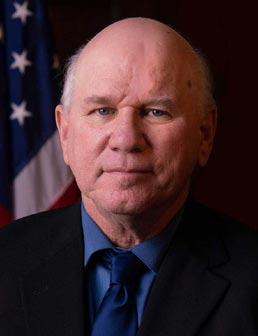
Gary Stamper
Former Lewis County Commissioner
Regional Economic Overview
The pace of employment growth in Western Washington continues to slow. The region added only 90,340 new jobs over the past 12 months.
That said, the annual pace of employment growth was a respectable 3.6%. Three counties have not recovered completely from their pandemic job losses: Whatcom, Skagit and Snohomish. However they are short by just under 10,000 jobs, which should be recovered by this fall. Regionally, the unemployment rate in February was 4.1%, which was marginally above the 3.8% level of a year ago.
The employment outlook has improved modestly, with the likelihood of a recession in 2023 down to about 50%. That said, I expect the pace of job growth to continue to slow as businesses remain concerned about a contraction in consumer spending, as well as facing tighter credit conditions following recent bank failures.
Western Washington Home Sales
• In the first quarter of the year, 10,335 homes sold. This was down 30.9% from the same period in 2022 and 18.9% lower than in the fourth quarter of 2022.
• Lower sales activity was more a function of the limited number of homes for sale than anything else. Listing activity in the first quarter of 2023 was down 43% from the final quarter of 2022.
• Home sales fell across the board compared to the same quarter of last year and were lower in every county compared to the final quarter of 2022.
• Pending sales rose in all but three counties compared to the fourth quarter of 2022. This suggests that sales in the second quarter of the year may tick higher. That said, the region is in dire need of more inventory.
Western Washington Home Prices
• Home prices fell an average of 6.9% compared to the first quarter of 2022 and were 1.3% lower than in the fourth quarter of 2022. The average home sale price in the first quarter of 2023 was $692,866.
• Compared to the fourth quarter of 2022, prices were higher in Kitsap, Skagit, Lewis, San Juan and Whatcom counties.
• Even though prices fell in the region, five counties saw sale prices rise very modestly from the first quarter of 2023.
• It’s worth noting that median listing prices rose in all but two markets compared to the previous quarter. This suggests that sellers are getting a little more comfortable with the market. If listing prices continue to rise, one can surmise that home prices will follow suit.
Mortgage Rates
Rates in the first quarter of 2023 were far less volatile than last year, even with the brief but significant impact of early March’s banking crisis. It appears that buyers are jumping in when rates dip, which was the case in mid-January and again in early February.
Even with the March Consumer Price Index report showing inflation slowing, the Federal Reserve raised short-term rates following their May meeting. My current forecast is that rates will continue to move lower with occasional spikes, and that they will hold below 6% in the second half of this year.
Western Washington Days on Market
• It took an average of 56 days for a home to sell in the first quarter of this year. This was 32 more days than in the same quarter of 2022 and 16 days more than in the fourth quarter of last year.
• King County remains the tightest market in Western Washington, with homes taking an average of 41 days to sell. Homes in San Juan County took the longest time to sell.
• Market time rose in all counties contained in this report compared to the same period in 2022 and compared to the fourth quarter.
• The greatest increase in market time compared to a year ago was in Grays Harbor County, where it took an average of 41 more days for homes to sell. Grays Harbor County also saw the greatest increase in market time compared to the final quarter of 2022 (from 46 to 76 days).
Conclusions
Although the regional economy is still expanding, it continues to show signs of slowing. With the probability of a national recession this year now 50-50, I do not see any reason for buyers to lose confidence in their housing decisions based purely on economic factors.
Sellers appear to be a little more confident in the market as demonstrated by rising listing prices. Periods of lower mortgage rates and the lack of homes for sale are both likely contributors to this. Whatever the case may be, I am not seeing any signs of panic in the market.
Even in the face of higher financing costs, low inventory levels support home values, and the data suggests that the worst of the price declines are now behind us. The region had fewer sales, modestly lower prices, and higher average days on market, all of which favor home buyers.
However, lower inventory levels, higher pending sales, higher listing prices and a higher absorption rate of homes that are for sale favor sellers. As such, I am moving the needle towards a balanced market, but one that ever so slightly favors sellers.
Alliance Open Returns to Riverside Friday, Sept. 15
Skills Competition Night Open to Public on Thursday, Sept. 14The Alliance Open, the annual golf tournament hosted by the Economic Alliance of Lewis County, is back, bigger and better.
The event is Friday, Sept. 15 at Riverside Golf Course in Chehalis, located at 1451 NW Airport Road. Registration starts at 8:30 a.m., with a shotgun start at 10 a.m. The tournament is a four-man scramble, with lunch included, great prizes and raffle tickets available for $5 or five for $20. Cost is $1,000 for a four-person team.
“We are excited to bring back the Alliance Open for year three,” said Economic Alliance of Lewis County’s External Relations Manager Eric Sonnenberg. “We have had tremendous community support and look forward to this year’s tournament. Thank you to Riverside Golf Club for hosting us.”
In addition to the four-man scramble on Friday, a Skills Competition Night starts at 5:30 p.m. the night before the tournament — Thursday, Sept. 14, also at Riverside Golf Course. The Skills Competition Night includes competitions for longest drive, chipping and putting.
The skills challenge is open to the public; you don’t have to be a player in the Alliance Open to participate.
Cost is $50 to enter all three competitions, or $20 per category. Entry includes a drink ticket. The Thursday event includes music, appetizers and two no host bars.
The Skills Competition Night has two divisions, with first place being a Riverside Golf Course membership under the competitive category, and a stay at McMenamins for first place in the non-competitive category.
To pre-register, call 360-748-0114. The Skills Competition Night is sponsored by Drybox.
Washington is ‘Union Strong.’ Are you ready to join us?
THE WASHINGTON STATE LABOR COUNCIL, AFL-CIO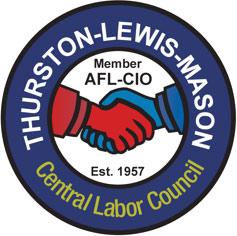
Powersports Northwest Brings Experience, Customer Service To Lewis County
Powersports Northwest – Powersports Northwest offers a wide range of products to help customers enjoy the outdoors.
The Economic Alliance of Lewis County is proud to count Powersports Northwest, located in downtown Centralia, as a member.
Co-owner Jonathan Hubbert (along with his father Ralph Hubbert) said being a member and supportive of the Alliance is important for the Lewis County region.
“Local businesses are really the key to our community,” Hubbert said. “The heart of our economy is local businesses, and we rely on each other for support. The Alliance is as important as it gets — they focus 100% of their time on promoting that growth that we rely on to trickle down for generations to come.”
Powersports Northwest offers a wide range of products and services, including side by sides, motorcycles, electric vehicles, ATVs, snowbikes, power equipment and E-bikes.
“At Powersports Northwest we are powersports enthusiasts, and we are excited to help you experience the fun and adventure that a quality Honda, Polaris or Yamaha vehicle can bring into your life,” Hubbert said. “We are a powersports dealership serving the Centralia area, offering the best in new and pre-owned motorcycles and other powersports vehicles. Our friendly and knowledgeable sales, financing, service, and parts departments are ready to offer outstanding service at every point, from assisting while you’re making your choice to ongoing maintenance and customization.”
Powersports Northwest has been serving Lewis County and the surrounding area for over 40 years.
“We are grateful to our many loyal customers that come from all over Southwest Washington,” Hubbert said. “It is gratifying that we have become the motorsports home to the same area families for generations. Whether it’s vehicles, power equipment, parts, accessories or service we want your buying experience to be the best it can be.”
If you are looking for experienced assistance, each Powersports employee has worked in the industry an average of 17 years.
“We may not be the biggest or the fanciest, and you’ll find us a lot like your traditional hometown dealer,” Hubbert said. “But one thing’s for sure. When you leave our store we want you to feel that you came to the right place. Don’t be fooled by imitators. Come visit us and we’re confident you’ll agree that ‘we’re no ordinary dealer.’”
Hubbert said Powersports Northwest puts a premium in creating long-term relationships with their customers by exceeding their expectations.
“Having a quality business such as Powersports Northwest headquartered in Centralia is a bonus for our community, from providing recreation for customers to providing employment,” said Richard DeBolt, executive director of the Alliance. “The Alliance is a proud partner with Powersports.”
Powersports Northwest is located at 300 S. Tower Ave. in downtown Centralia, and can be contacted at (360) 736- 0166.
West Coast States Seek Millions to Create Zero-Emission Truck Fueling Network
Washington, Oregon and California Are Planning To Build a Network of Electric Truck Chargers and Hydrogen Fueling Stations
By Alex Baumhardt
Washington State Standard
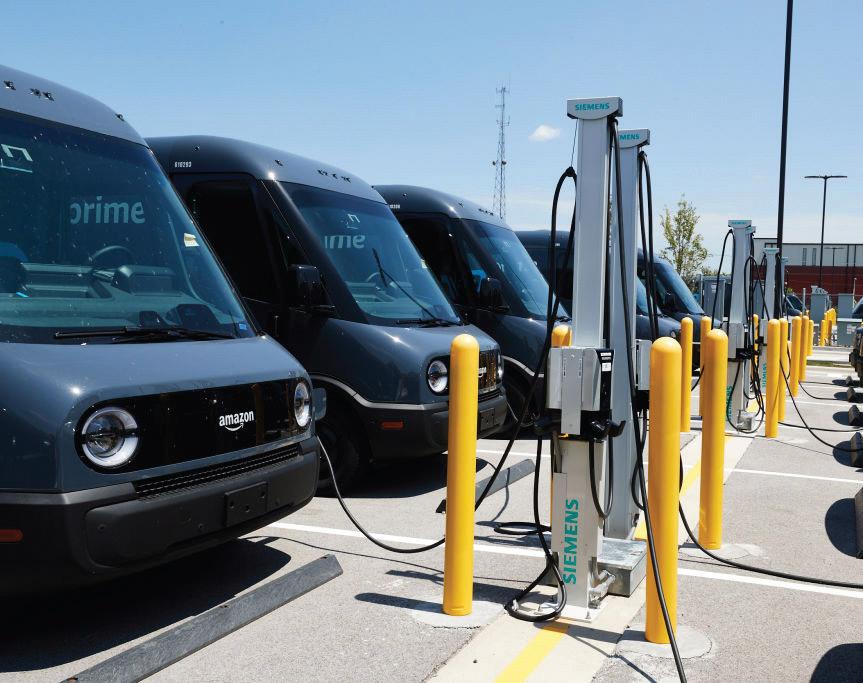
A fleet of electric delivery vehicles charge. A new network of stations up and down the West Coast could accelerate the adoption of more electric vehicles across the region.
I-5 Distribution Center 1850 Bishop Road Chehalis
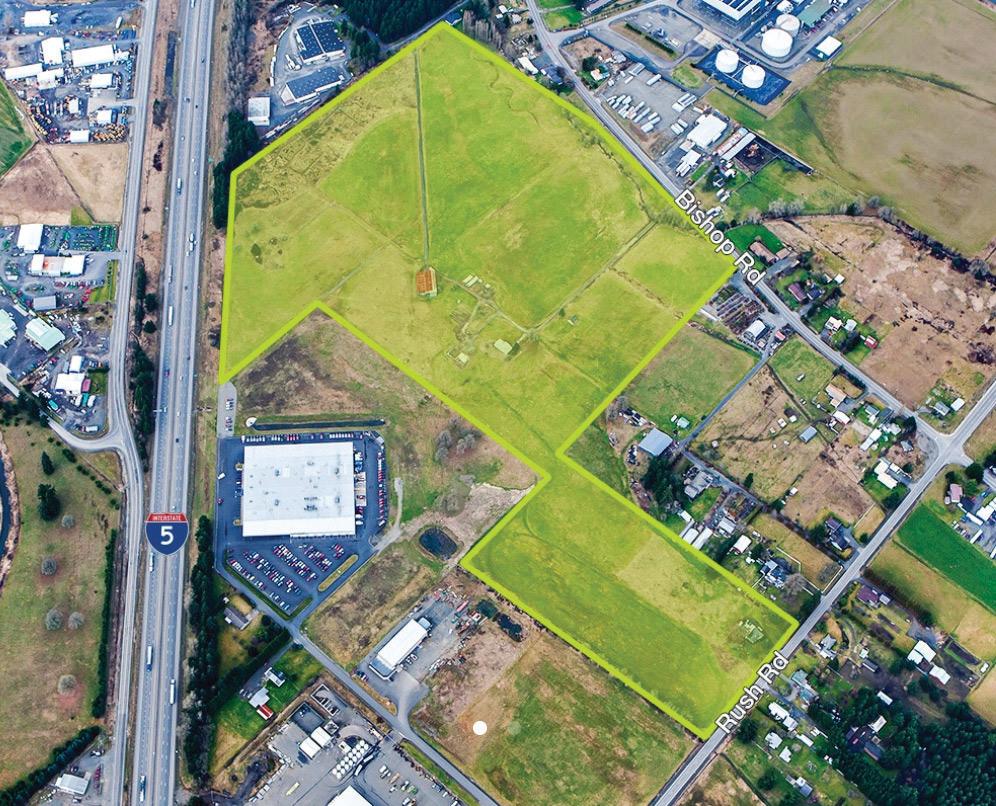
FEATURES:
- 60 acres fully entitled land for sale
or build-to-suit for lease/sale - Build-to-suit up to
1.1 million square feet - SEPA approval
- Interstate 5 frontage
- Utilities stubbed to site
UTILITIES:
- Electricity: Lewis County PUD
- Water: City of Chehalis
- Sewer: City of Chehalis
- Zoning: Light Industrial/
- Commercial General
